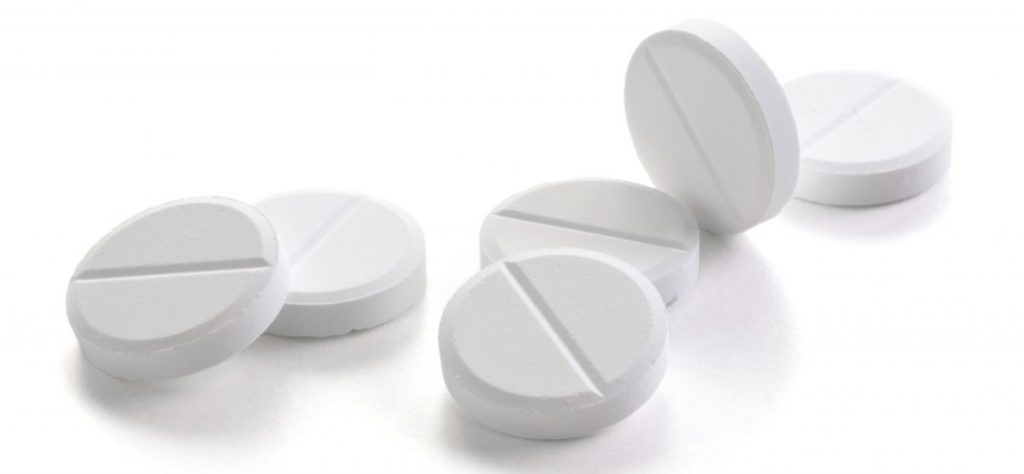The Food and Drug Administration (FDA) is a government agency established in 1906. Their responsibility is to help protect public health by assuring the safety, effectiveness, and quality of drugs, vaccines, medical devices, cosmetics, supplements, our food supply, and other products that impact public health, including human and veterinary health.
The FDA also regulates the development of new drugs and has developed certain rules regarding the types of clinical trials that must be conducted before any new medications can be marketed to the public. These rules were developed over a long period of time as a necessary course of safety measures intended to protect consumers from unsafe products.
In 1988, the FDA created its fast track designation as one of its approaches to making new drugs available to the public faster; since then, others followed, including Priority Review, Breakthrough Therapy, Accelerated Approval, and Regenerative Medicine Advanced Therapy. The problem with fast-tracked drug approvals is that the rigorous clinical trial process was (and still is) bypassed, and drugs came on the market before long-term clinical outcomes could be measured.
How Does the Fast-Track Approval Work?
The fast track designation allows an investigational drug to be eligible for expedited review in order to make new drugs available to the public as rapidly as possible. That can be a good thing. The problem is that while fast track processing of drugs does make them available sooner when they are urgently needed, it also presents a serious safety concern as vital steps – including long-term clinical outcomes – are being omitted in the approval process.
Not that these companies aren’t supposed to follow up after their drugs are put on the market; they clearly are, because post-approval trials are mandated as part of the fast track process. The pharmaceutical companies simply are not doing their part. In fact, one 2017 study found that follow-up trials aren’t being conducted as promised.
- Post-approval requirements were completed and demonstrated efficacy in only 10 of 24 conditions (42%) on the basis of trials that evaluated surrogate measures
Among the 14 of 24 conditions (58%) that had not yet completed all requirements:
- At least 1 of the confirmatory studies failed to demonstrate clinical benefit in 2 (8%)
- Studies were terminated in 2 (8%)
- Studies were delayed by more than 1 year in 3 (13%).
- Studies were progressing according to target timelines for only 7 conditions (29%)
- Clinical benefit had not yet been confirmed for 8 conditions that had been initially approved 5 or more years prior
Long-term outcome measures are important, not only in assessing for the safety of a drug, but also the drug’s effectiveness in treating the condition for which it is intended. Many of the drugs given FDA approval lack the rigorous controls that clinical trials are typically required to have and, as a result, leave a great amount of uncertainty as to whether the benefits outweigh the risks.
This occurs as drug approvals are often based on surrogate markers. A surrogate marker (or surrogate endpoint) is in indirect indicator of a disease state or its response to therapy. It might be a blood test or X-ray that indicates the drug has some effect but cannot guarantee it actually works or extends life. The problem is that these are not actual outcomes from a particular treatment on multiple patients in controlled, clinical trials, and all too often repeat studies show these to not be a benefit at all, but in some cases, are actually harmful. In other words, surrogate endpoints are not always real-life indicators of how well a drug treatment actually works.
This practice has allowed more and more drugs to be approved and placed on the market that otherwise would not have been without more solid evidence of their safety and efficacy. In fact, according to a study conducted by Chary (2016), the number of drugs fast-tracked has steadily increased every year since the program’s inception in 1998, and so have the number of safety risks (adverse events) to patients (see Table 1 below).
Fast Track Designation Products Since Inception
| Years | Number of Drugs Approved | Percent of All Drugs |
|---|---|---|
| 1998-2000 | 10 | 6.8 |
| 2001-2003 | 13 | 8.8 |
| 2004-2006 | 28 | 19.0 |
| 2007-2009 | 29 | 19.7 |
| 2010-2012 | 26 | 17.6 |
| 2013-2015 | 41 | 27.9 |
| 2016-2018 | 71 | N/A |
| 2019* | 29 | N/A |
*2019 totals may not be finalized.
According to Drugwatch, “In the last several years, the FDA has approved record numbers of new drugs. While drug approvals are up, so are safety risks — many of these lead to black box warnings.” Further, a 2017 study by Downing et al. revealed that nearly a third of all drugs approved between 2001 and 2010 by the FDA pose a safety risk. He and fellow researchers found that of the 222 new therapeutics the FDA approved during this time period, three were withdrawn from the market, 61 received black box warnings, and 59 elicited safety communications (official warnings or communications to the public) from the FDA.
Misplaced Trust: The Newest Problem in the Drug Approval Process
Drugs that the FDA has given fast track status have been 3.5 times more likely to receive a black boxed warning after coming into the hands of patients than other drugs. One study found that of 200 drugs launched between 1997 and 2010, 22 were pulled from the market and 30 received boxed warnings.
How is this happening? As it turns out, the main source of funding to the FDA comes from the pharmaceutical companies themselves. Many believe this clearly presents a conflict of interest – and safety risk – to patients.
A Consumer Reports survey in 2003 reported that FDA reviewers felt rushed and pressured to approve new medications, but some studies have found the faster a drug was reviewed, the greater the chance for adverse events surfacing after the drug hits the market. In a study conducted by Olson in 2003, for example, each 10-month reduction in review time periods leads to:
- An 18% increase in serious adverse reactions
- An 11% increase in drug-related hospitalizations
- A 7.2% increase in drug-related deaths
According to Drugwatch (2020), “The FDA doesn’t always apply the same criteria to all drugs, either.” Downing et al. (2014) of Yale University School of Medicine found that:
- 37% of approved drugs were only backed by a single study
- 45% of all drugs were approved on “surrogate endpoints”
- 68% compared new drugs only to placebos, which this means they determined something was better than nothing — not that the drug was better than another drug
While fast-tracking has given an edge in certain cases (such as HIV and AIDS in the 1990s), this is not always the case in present-day use of the process. Far too many fast-tracked drugs are receiving black box warnings due to rushing inefficiently tested substances to market. Between 2012 and 2016, 57% of fast-track molecules received black box warnings. Many were even pulled from the market entirely:
List of Fast-Tracked Drugs Withdrawn from Market
| Drug Name | Category | Reason for Market Withdrawl |
|---|---|---|
| Valdecoxib | Selective cox-2 inhibitor | Increased cardiovascular events |
| Rapacuronium | Skeletal muscle relaxant | Bronchospasm and death |
| Troglitazone | Oral hypoglycemic | Hepatoxicity |
| Cerivastatin | Hypolipidemic | Hepatoxicity |
| Drotrecogin alfa | Anti-inflammatory | Lack of efficacy |
| Mibefradil | Anti-anginal drug | Lack of efficacy |
| Cefonicid, Moxalactam | Cephalosporins | Lack of efficacy |
This shorter approval process has led to greater uncertainty about both patient safety and efficacy of the drugs themselves, and far too many of these new drugs are among most of the expensive on the market and yet aren’t showing to be any more effective than older drugs; some of them come at prices as high as $189,000 per month for an average patient.
Not only are they not more effective and much more expensive, but too many of them are clearly dangerous. Most of the drugs for hepatitis C underwent the fast track process and were approved based on their ability to reduce the virus in the blood. Unfortunately, these drugs produced severe acute liver injury in patients who used them. Not only did they not cure the malady as promised but worsened the condition and led to life-threatening complications in some of the patients who used them.
Read Your Label: Some Common Drugs with Black Box Warnings
The following fast-tracked drugs – among many, many others – have been given boxed warnings:
Pradaxa. After only a very short time on the market, a boxed warning was issued for the anticoagulant drug Pradaxa (dabigatran) had been linked to more than 500 deaths. That number is now in the thousands.
Celebrex. Another fast-tracked drug, Celebrex (celecobix) received a black-box warning regarding the potential for increased risk of cardiovascular events (heart attack, stroke) and life-threatening gastrointestinal bleeding (including bleeding, ulceration, and perforation of the stomach or intestines) which can be fatal.
Xarelto. Fast-tracked in 2011, Xarelto (rivaroxaban) received its first black box warning in 2013 and a second in 2014. The first warning stated that patients who prematurely discontinued Xarelto were at a higher risk for blood clots, deep vein thrombosis, and epidural/spinal hematoma. In late 2014, another warning was issued by the FDA regarding drug interactions with several drugs that should not be taken with Xarelto.
Invokana. Canagliflozin is prescribed to treat type 2 diabetes and reduce the risk of major adverse cardiovascular events in adults with type 2 diabetes. However, a recent boxed warning has indicated that patients with type 2 diabetes who have established heart disease or who are at risk for heart disease may be at increased risk for lower limb amputation, specifically the toe, midfoot, and leg. To date, over 1,000 lawsuits have been filed.
Enbrel. This drug (etanercept) was fast-tracked in 2001 for psoriatic arthritis. While it had been used to treat rheumatoid arthritis, plaque psoriasis, psoriatic arthritis, ankylosing spondylitis, and juvenile idiopathic arthritis, and had already carried warnings about infection risk, it received a black box warning in 2008 due to rare cases of tuberculosis with Enbrel use.
Farxiga. Farxiga (dapagliflozin) is an oral medication used to treat Type 2 diabetes. People who take this drug may be at greater risk for bladder cancer. Farxiga shares several side effects with other drugs in its class. Side effects include diabetic ketoacidosis, kidney injury and serious urinary tract infections.
Actos. Pioglitazone (Actos) and rosiglitazone (Avandia) are thiazolidinediones indicated for the treatment of type 2 diabetes mellitus. Actos has been given a black box warning as it have been shown to cause or exacerbate congestive heart failure in some patients due to dose-related fluid retention. In addition, fluid buildup in the body may result in edema in the extremities or abdomen and may increase the chance of having a heart attack.
Abilify. Abilify (aripiprazole) is an atypical antipsychotic used for the treatment of various mental health and mood disorders, including schizophrenia, depression, and bipolar disorder. However, it increases the risk of suicidal thoughts and behaviors in children and young adults taking antidepressants and increases the risk of death in elderly patients with dementia-related psychosis. Even though it is not included in the boxed warning, the FDA warned that the drug could cause impulse-control problems, such as binge eating and compulsive gambling. More than 2,700 patients who experienced these extreme compulsive behaviors have filed lawsuits.
Other Black Box Drugs You Should Know About
While some of the drugs below have been around for a while, you may be surprised to know they also carry black box warnings.
Adderall. Adderall (amphetamine/dextroamphetamine) is used to treat ADHD. The FDA announced they have received 51 reports of sudden death in children and adults who took Adderall. Use of this drug also comes with an increased risk of stroke and heart attack. In addition to the known side effects of sleep disruption and increased risk for mental health problems – including depression, bipolar disorder, and aggressive or hostile behavior – Adderall also has a high potential for drug abuse.
Cipro. Ciprofloxacin is an antibiotic in a class with others called fluoroquinolones that are commonly used to treat bacterial infections of all types, including chronic bronchitis, urinary tract infections, and more. It has received a black box warning because it vastly increases the risk of tendinitis and tendon rupture (especially Achilles tendonitis). Over 300 studies have linked nervous system damage and neurotoxicity with the use of this drug.
Synthroid. Synthroid (levothyroxine) is one of the most prescribed by physicians – over 23 million prescriptions are written every month. It is usually given to treat underactive thyroid, for Hashimoto’s, and when thyroid cancer lowers the circulating thyroxine in the body. But research also shows a subsequent development of dementia of the Alzheimer type with Thyroid medication use. A black box warning was issued because patients taking this drug may be at increased risk for a variety of ailments when taken for weight loss. Additionally, high doses may cause toxicity, especially when used in combination with other drugs.
What Exactly is a Black Box Warning?
While the use of any drug comes with at least some risk, there are some prescription drugs that the U.S. Food and Drug Administration (FDA) requires to have a boxed warning, or warning formatted with a “black box” or border around the warning text in the literature describing it. This will be because there has been some major safety issue – reasonable evidence of serious hazards associated with using the drug, including adverse reactions leading to serious injury or death.
While not all patients who take these drugs will experience the effects being warned about, the warnings are designed to call attention to the potentially serious or life-threatening risks of using a drug and are primarily intended for prescribing health professionals.
Not all physicians, however, will pass this vital information on to their patients. In fact, thanks to increased media attention concerning black box warnings in recent years, patients are more aware of the high risks associated with many drugs that have been or are still on the market. For example:
- The risks associated with many antidepressants in certain populations (i.e., children and elder adults) have been highlighted
- Risks associated with many anticoagulants (blood thinners) have been well-publicized
If you listen carefully to many commercials advertising the latest drug, the long lists of speedily read side effects often include liver damage, bleeding, heart attack or heart failure, extrapyramidal side effects (tremor, slurred speech, restlessness, finger tapping, rocking, etc.), lymphoma and other cancers, infections, psychiatric adverse effects such as agitation, depression, suicidal ideation, and a host of other adverse effects, including death.
On the other hand, drug companies who advertise to consumers clearly have one main goal in mind: Sales. For that reason, patients need to have frank discussions with their doctors on the benefits and risks of all prescribed medications and then make an informed decision before deciding to proceed on any course of treatment. Black box warnings are there for a reason and they should not be taken lightly.
Black Box Warning Process
Boxed warnings on drugs were first implemented in the late 1970s. Black box warnings are required when:
- Evidence shows a drug causes a serious adverse reaction — potentially fatal, life-threatening or permanently disabling — where the risks might outweigh the benefits
- A serious side effect can be avoided or reduced in severity or frequency by appropriate use of the drug, such as avoiding use in specific situations, observing patients, careful patient selection or avoiding using the drug with certain medications
- The FDA approved the drug only for restricted use to ensure public safety
- The drug is less effective or dangerous to certain populations such as the elderly, children or pregnant women
Once it has been determined that a drug needs a black box warning, the FDA will contact the drug manufacturer and have them add the warning to its packaging. The FDA must approve the wording that will be printed on the drug’s packaging or insert.
FDA Adverse Event Reporting System (FAERS)
An adverse drug reaction is an undesirable side effect that can range from mild to severe. Serious adverse events are those that cause birth defects, disability, hospitalization, are life-threatening, or lead to death.
FAERS is a database that contains adverse event reports, medication error reports, and product quality complaints that have resulted in adverse events. Once these have been submitted to FDA they are included in this database. The FAERS dashboard is a highly interactive public web-based tool that allows for the querying of data in a user-friendly fashion.
Drug Recalls
Drug recalls occur to remove products from the market that the FDA considers to be dangerous or in violation of the law. Recalls are placed into one of three classifications: Class I, II, or III. Class I recalls are the most serious and involve products that can cause death, or at least serious adverse health consequences. A Class II might cause a medically reversible adverse health consequence, while a Class III is where exposure to a product is not likely to cause any adverse health consequence.
What if My Prescription Has a Black Box Warning?
Nearly one in three drugs have been found to have safety concerns after they have been approved by the FDA, so vigilance is key. You will see a black box label surrounding the text on the package insert or other literature describing the medication you take. If you learn that a medication you are taking has a boxed warning: Do not stop taking your medication without consulting with your doctor first. Do talk to your doctor about your concerns right away. Remember that sudden discontinuation of some drugs can be dangerous, so always call your doctor right away with concerns. Follow your doctor and/pharmacist’s advice on taking medications.
Considerations When Faced with Boxed Warnings
- Do the potential benefits outweigh risks?
- Are there safer and equally effective alternatives available?
- Are other, safer treatment options more appropriate?
- Is there any way to lessen the chance of potential side effects?
This website allows you to browse drugs alphabetically and read about the common and potentially adverse side effects of drugs on the market and any black box warnings that have been issued. It also contains links to news and alerts on drug recalls.
If You are Having an Adverse Drug Reaction
If you think you are having an adverse reaction to a drug you are taking, you should contact your doctor right away. Adverse reactions can range from mild to severe and life-threatening.
- Mild symptoms include red, itchy, flaky, or swollen skin. You may have a flat, red area on your skin that is covered with small bumps. You may also have hives.
- Severe symptoms include skin that blisters or peels, vision problems, and severe swelling or itching. Severe reactions include conditions such as toxic epidermal necrolysis (TEN). Ask your healthcare provider for more information on TEN and other serious conditions.
- Anaphylaxis symptoms include throat tightness, trouble breathing, tingling, dizziness, and wheezing. Anaphylaxis is a sudden, life-threatening reaction that needs immediate treatment. Anaphylaxis may occur if you exercise after exposure to another trigger, such as after you take an antibiotic.
Seek Immediate Treatment If:
- You have a rash with itchy, swollen, red spots
- You have blisters, or your skin is peeling
- You have trouble swallowing or your voice sounds hoarse
- You have a fast or pounding heartbeat
- Your skin or the whites of your eyes turn yellow
Resources
American Health Line Advisory Board. (2019). ‘A new normal’: FDA is fast-tracking more drugs than ever, but is that safe? https://www.advisory.com/daily-briefing/2019/07/10/fast-tracked
Bad Drug.net. (2020). Black box warning. https://www.bad-drug.net/black-box-warning
Brander, C. (2017). FDA approvals: On a fast-track to disaster. https://nwhn.org/fda-on-fast-track-to-disaster/
Chary, K.V. (2016). Expedited drug review process: Fast, but flawed. Journal of Pharmacology and Pharmacotherapy, 7(2), 57-61. doi:10.4103/0976-500X.184768 https://www.ncbi.nlm.nih.gov/pmc/articles/PMC4936080/
Chen, C. (2018). FDA repays industry to rushing risky drugs to market. https://www.propublica.org/article/fda-repays-industry-by-rushing-risky-drugs-to-market
Downing, N.S., Shah, N.D., & Aminawung, J.A. (2017). Postmarket safety events among novel therapeutics approved by the US food and drug administration between 2001 and 2010. JAMA, 317(18), 1854-1863. doi:10.1001/jama.2017.5150 https://jamanetwork.com/journals/jama/fullarticle/2625319
Drugs.com. (2019). Adverse drug reaction. https://www.drugs.com/cg/adverse-drug-reaction.html
Drugwatch. (2019). Misplaced trust: Why FDA approval doesn’t guarantee drug safety. https://www.drugwatch.com/featured/misplaced-trust-fda-approval-concerns/
FDA. (2019). Development & approval process: Drugs. https://www.fda.gov/drugs/development-approval-process-drugs
FDA. (2019). FDA Adverse event reporting system. https://open.fda.gov/data/faers/
FDA. (2012). Consumer Health Information. A guide to drug safety terms at FDA. https://www.fda.gov/media/74382/download
FDA. (2019). Fast track approvals. https://www.fda.gov/drugs/nda-and-bla-approvals/fast-track-approvals
FDA. (2014). Recalls background and definitions. https://www.fda.gov/safety/industry-guidance-recalls/recalls-background-and-definitions
Furey, K., & Wilkins, K. (2016). Prescribing “off-label”: What should a physician disclose? AMA Journal of Ethics. https://journalofethics.ama-assn.org/article/prescribing-label-what-should-physician-disclose/2016-06
LaMattina, J. (2018). The biopharmaceutical industry provides 75% of the FDA’s drug review budget. Is this a problem? Forbes. https://www.forbes.com/sites/johnlamattina/2018/06/28/the-biopharmaceutical-industry-provides-75-of-the-fdas-drug-review-budget-is-this-a-problem/#205c9f0349ec
Lupkin, S. (2019. FDA keeps brand-name drugs on a fast path to market – Despite manufacturing concerns. Kaiser Health News. https://khn.org/news/fda-keeps-brand-name-drugs-on-a-fast-path-to-market-%e2%80%95-despite-manufacturing-concerns/
Maggs, L., & Kesselheim, A.S. (2014). The role of black warnings in safe prescribing practices. https://www.healthaffairs.org/do/10.1377/hblog20140820.040875/full/
Murphy, S., & Roberts, R. (2005). Black box 101: How the food and drug administration evaluates, communicates, and manages drug benefit/risk. https://www.jacionline.org/article/S0091-6749(05)02325-0/fulltext
Naci, H., Smalley, K.R., & Kesselheim, A.S. (2017). Characteristics of preapproval and postapproval studies for drugs granted accelerated approval by the US food and drug administration. JAMA, 318(7), 626-636. doi:10.1001/jama.2017.9415 https://jamanetwork.com/journals/jama/article-abstract/2648631
Nelson, R. (2018). FDA expedited approval process raises concerns about risks. National Center for Health Research. http://www.center4research.org/fda-expedited-approval-process-raises-concerns-risks/
Pillar, C., & You, J. (2018). Hidden conflicts? Pharma payments to FDA advisers after drug approvals spark ethical concerns. Science. https://www.sciencemag.org/news/2018/07/hidden-conflicts-pharma-payments-fda-advisers-after-drug-approvals-spark-ethical
Pruse, M. (2020). Extrapyramidal side effects from medication. https://www.verywellmind.com/extrapyramidal-side-effects-380021
Stone, K. (2017). Approval of ‘breakthrough’ hepatitis C drugs isn’t even half the story; Now come the harms. Health News Review. https://www.healthnewsreview.org/2017/01/approval-of-breakthrough-hepatitis-c-drugs-isnt-even-half-the-story-now-come-the-harms/
Upham, B., Sinha, S. (2018). What is a black box warning for a drug? Everyday Health Newsletters. https://www.everydayhealth.com/fda/what-black-box-warning-drug/







No Comment